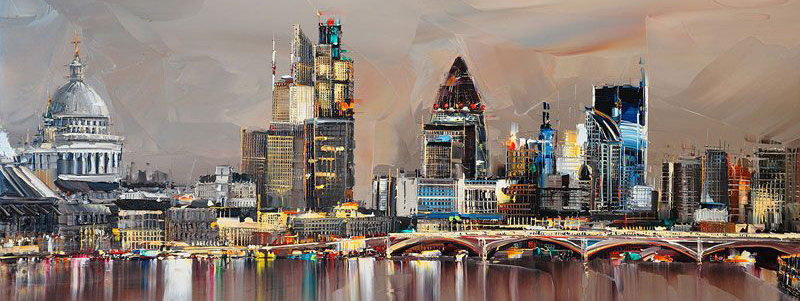TOWER OF LONDON AND SURROUNDING AREA
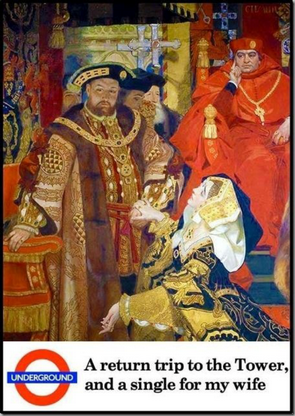 The Tower of London gives its name to the area where it stands, Tower Hamlet, or "small village near the tower." It is the most important medieval building in the city, used over the centuries as an arsenal, the location of the mint, a prison, a Museum of Arms, and even a zoo, as some lions were housed there. However, since it is not precisely an unusual or unknown place, we will only mention it briefly.
The Tower of London gives its name to the area where it stands, Tower Hamlet, or "small village near the tower." It is the most important medieval building in the city, used over the centuries as an arsenal, the location of the mint, a prison, a Museum of Arms, and even a zoo, as some lions were housed there. However, since it is not precisely an unusual or unknown place, we will only mention it briefly.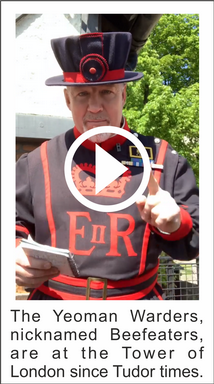 A good suggestion is to climb to Trinity Gardens and take some time to gaze down upon the river from there.
A good suggestion is to climb to Trinity Gardens and take some time to gaze down upon the river from there. In such a manner, you can admire the lines of its defensive wall outside the moat, which alternate with the bastions of the White Tower, the stronghold of the Conqueror. Overall, the Tower is a magnificent example of medieval military architecture, an important symbol of the feudal system. What is more, this fortified and safe haven for kings, which contained their treasure and arsenal, is the greatest demonstration of the power and authority of medieval monarchy.
 On the summit of Tower Hill, stands a monument to the war dead, the 36,000 merchant navy deaths in the two world wars. It was designed by Edward Maufe, while the sculptures are by the hand of Charles Wheeler. On the anniversary of the armistice, the wall and garden are covered in poppies, in memory of past sacrifices. The paved square that lies in a corner once used to be the site of the gallows: at least 130 people were executed there. On a rock one can read the inscription that commemorates "the tragic history and martyrdom of those who, for love of their faith, their country or their ideals, risked their lives and lost them." In summertime, the hoary stocks fill the place with their scent. Shakespeare lovers say that this is a place that may aid in understanding his works, so as to empathize with characters such as Richard III, but also to gain some insight into the minds of the condemned, hardened by years of imprisonment in this fortress. Another relic of the past is the small round brick tower standing alongside the ticket office. In 1869, a tunnel called Tower Subway was built under the Thames at Tower Hill. Inside, an omnibus traveling to and fro would run along a single track and was capable of carrying a dozen passengers. In truth, many more passengers than that passed through, at least twenty thousand a week, when the means of transportation was eliminated and the tunnel started to be travelled by people on foot. In 1894, when the toll on the bridge was eliminated, the tunnel finally became redundant.
On the summit of Tower Hill, stands a monument to the war dead, the 36,000 merchant navy deaths in the two world wars. It was designed by Edward Maufe, while the sculptures are by the hand of Charles Wheeler. On the anniversary of the armistice, the wall and garden are covered in poppies, in memory of past sacrifices. The paved square that lies in a corner once used to be the site of the gallows: at least 130 people were executed there. On a rock one can read the inscription that commemorates "the tragic history and martyrdom of those who, for love of their faith, their country or their ideals, risked their lives and lost them." In summertime, the hoary stocks fill the place with their scent. Shakespeare lovers say that this is a place that may aid in understanding his works, so as to empathize with characters such as Richard III, but also to gain some insight into the minds of the condemned, hardened by years of imprisonment in this fortress. Another relic of the past is the small round brick tower standing alongside the ticket office. In 1869, a tunnel called Tower Subway was built under the Thames at Tower Hill. Inside, an omnibus traveling to and fro would run along a single track and was capable of carrying a dozen passengers. In truth, many more passengers than that passed through, at least twenty thousand a week, when the means of transportation was eliminated and the tunnel started to be travelled by people on foot. In 1894, when the toll on the bridge was eliminated, the tunnel finally became redundant.St John's Chapel –if you are short on time or have other limitations, were you only to have time for a single visit to a building, this would definitely be must-see: it is one of the most beautiful pieces of Norman architecture and gives an idea of the humility of the medieval spirit, but also of its violence and its terrors. The coloured stained glass windows, depicting the Virgin and Child and Saint John the Evangelist, were placed by Henry III.
TOWER OF LONDON
UNDERGROUND: TOWER HILL
The Ceremony of the Keys, a security measure that has taken place regularly for the past seven hundred years, takes place every evening, and is still a necessary precaution as the Crown Jewels and many other treasures are still kept inside. Watching the ceremony with its curious ritual is free, but one must apply with a written letter well in advance.
TOWER HILL
UNDERGROUND: TOWER HILL
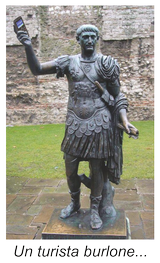 Wakefield Gardens are arranged around one of the longest stretches of Roman wall, where you can find a replica of a tomb (the original fragment is in the British Museum) in memory of Julius Classicianus, placed there by his widow Julia Pacata. Classicianus was the procurator who, following Boadicea's rebellion, had asked Suetonius to moderate his revenge on the rebels.
Wakefield Gardens are arranged around one of the longest stretches of Roman wall, where you can find a replica of a tomb (the original fragment is in the British Museum) in memory of Julius Classicianus, placed there by his widow Julia Pacata. Classicianus was the procurator who, following Boadicea's rebellion, had asked Suetonius to moderate his revenge on the rebels.When the latter was recalled to Rome, Classicianus remained in control of the province, and later died here.
TRINITY SQUARE GARDENS
UNDERGROUND: TOWER HILL
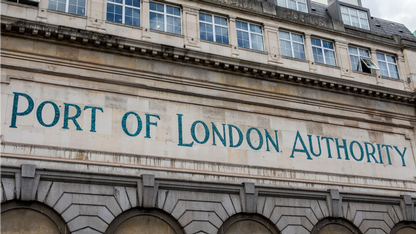 The Port of London Authority was created in 1908. As well as being responsible for the navigation rights on the river, its safety and control through radar stations, the Authority also managed the dock and pier system of the port. Its jurisdiction extended from Teddington Obelisk to the mouth of the river in the North Sea, for a length of about one hundred and fifty kilometers. The Authority would keep a log of updates regarding the topographical maps of the basins and connected channels, controlled the heavy traffic on the river, and ensured the safety of navigation by inspecting the moorings, lighthouses, and bridge lighting, as well as dredging the water bed, and maintaining the banks. North of Trinity Gardens, in Trinity Square, stands the headquarters of the Port of London Authority. The imposing building was designed in 1922 by Edwin Cooper. Its huge tower dominates the area, the entrance has lampposts whose supports are decorated with figures of children riding the waves of the sea. Today the Authority encourages the use of the river for commercial and recreational purposes and protects the aquatic environment. The Authority maintains a presence in the City, with the offices of the president and officials at Baker's Hall on Harp Lane. Across the street, in the garden designed by E. Mauffe in 1955, stands the Lutyen's Marine Memorial.
The Port of London Authority was created in 1908. As well as being responsible for the navigation rights on the river, its safety and control through radar stations, the Authority also managed the dock and pier system of the port. Its jurisdiction extended from Teddington Obelisk to the mouth of the river in the North Sea, for a length of about one hundred and fifty kilometers. The Authority would keep a log of updates regarding the topographical maps of the basins and connected channels, controlled the heavy traffic on the river, and ensured the safety of navigation by inspecting the moorings, lighthouses, and bridge lighting, as well as dredging the water bed, and maintaining the banks. North of Trinity Gardens, in Trinity Square, stands the headquarters of the Port of London Authority. The imposing building was designed in 1922 by Edwin Cooper. Its huge tower dominates the area, the entrance has lampposts whose supports are decorated with figures of children riding the waves of the sea. Today the Authority encourages the use of the river for commercial and recreational purposes and protects the aquatic environment. The Authority maintains a presence in the City, with the offices of the president and officials at Baker's Hall on Harp Lane. Across the street, in the garden designed by E. Mauffe in 1955, stands the Lutyen's Marine Memorial.Arranged in a semicircle around the garden, there are some panels carved by C. Wheeler. In one there is a child riding a dolphin whose mouth he has passed a length of rope through; he has a rather wicked expression, with almond-shaped eyes and thick and stubby legs, which end in flippers. He is flanked by fish and by decreasingly large sea horses. Up above, one can see some sort of snail with spines.
TOWER HILL
UNDERGROUND: TOWER HILL
Trinity House draws its origins from a fraternity of sailors and high seas pilots of the early 15th century. Its goals were the safety of navigation, as well as assistance and support to poorer sailors. In 1514 Henry VIII had guaranteed a statute to the fraternity; in 1680 the first lighthouse was built by the Trinity House, and its activity continues to this day. The original building, dating back to 1792, was destroyed during World War II, but part of it, with the elegant facade, was rebuilt to be identical to the previous one. Entry into Trinity House is permitted on Saturday mornings, upon written request, but it is also worth just taking in the beautiful delicate architecture from the outside. Ceremonies and lunches are also held there.
UNDERGROUND: TOWER HILL
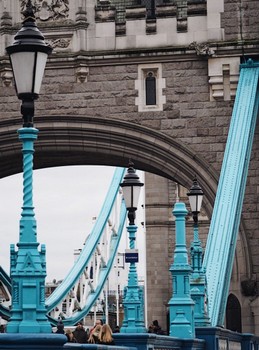 Is it possible that a bridge that has been seen and reproduced so many times can still hold surprises? Indeed it is. Along the western balustrade of the northern access of the bridge, partly suspended and partly mobile, there is a cast iron installation that resembles the support of a lamppost, without the actual lamp at its top. It is in fact actually a chimney that once served a fireplace located much further down, inside the guard room. The room was used by the officers in the tower, who came here to warm up a bit. On the chimney pipe, one can still read the name of the construction company, which belongs to the Durham Brothers, with headquarters at number 205 Bow Road.
Is it possible that a bridge that has been seen and reproduced so many times can still hold surprises? Indeed it is. Along the western balustrade of the northern access of the bridge, partly suspended and partly mobile, there is a cast iron installation that resembles the support of a lamppost, without the actual lamp at its top. It is in fact actually a chimney that once served a fireplace located much further down, inside the guard room. The room was used by the officers in the tower, who came here to warm up a bit. On the chimney pipe, one can still read the name of the construction company, which belongs to the Durham Brothers, with headquarters at number 205 Bow Road.On June 30, 1982, a museum was opened under the bridge: there are videos and films that tell the history of the Tower Bridge and explain its mechanism; you can admire the beautiful designs of the movable parts by George Stephenson, the assistant architect. At the foot of the bridge, on the south side, one can witness the original boilers, the hydraulic and steam engines, the accumulators and the series of tools necessary for maintenance. There are also some animated diagrams, various models and a rebuilt mechanism that all explain the way it functions. From the two passages enclosed by glass panes that are located on the upper part of the bridge, you can enjoy a panoramic view of the river and London.
SHAD THAMES
UNDERGROUND: TOWER HILL
After crossing the bridge, one should head to Butler's Wharf. One may choose to follow the signs, but it is an easy building to spot because it is completely white. The museum was opened in 1989 with the purpose of telling the history of industrial design throughout the 20th century. The inspiration came from Terence Conran of Habitat. The intention is that of demonstrating the industrial, cultural and economic reasons for the process of design.
The electric kettle was the first industrial design object. Its history is represented not only through the specimens on display, but also through illustrative posters. There are many models of chairs, of every possible manufacturing, radio and television sets, and dishes, including special cutlery for the elderly and disabled. There are exposed melamine plates, table lamps, typewriters, and office furniture. The use of iron, glass and plastic materials is explained, and the museum also illustrates how the combined action of technique, design, marketing and advertising was fulfilled. It illustrates how ergonomics, and in general the human factor, has conditioned the design of cars and computers. Among the curious objects there is a full-size wooden model of a car designed in 1928 by Le Corbusier, based on aerodynamic principles for the maximum comfort of the driver. It is a beautiful, elegant and comprehensive museum because of the fact that it is so very rich with information.
IN MEMORY OF THE SAILORS, TRINITY SQUARE
In front of the Tower of London stands a classic temple, the work of Edwin Lutyens, namely the Mercant Marine Memorial. It was erected in honor of the twelve thousand sailors belonging to the Merchant Marines and the fishing fleet who never returned and whose tomb ended up being the sea. Their names and those of their vessels are engraved on the bronze plaques that cover the walls. In the Memorial Gardens, there is a monument designed in 1955 by Sir Edward Maufe, the architect of Guildford Cathedral, which commemorates the deaths of the Second World War. To separate the columns on which the names of the fallen are engraved, there are panels with marine-themed bas-reliefs. There is also a voluptuous siren with sturdy, muscular legs, combing her exceedingly long hair which covers the more intimate parts of her anatomy. The siren has two tails, one for each leg, which resemble fins for swimming.
THE EXPERIMENTAL LIGHTHOUSE
TRINITY BUOY
WHARF DIR: EAST
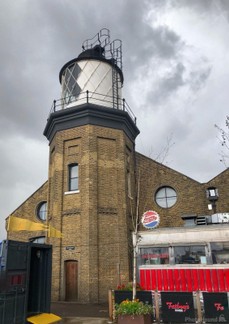 This prototype is an experimental lighthouse. It is the only one in London and a bit of perseverance is required to find it. It is located on the Leamouth Peninsula, in Orchard Place, in the Canning area. In addition to taking care of navigation warning devices, it also takes care of the different forms of lighthouse lighting. It is here that the London agency has experimented with them over time. The lighthouse was designed in 1866 by James Douglass and new lighting systems and burner models were tested inside. In the first half of the 20th century, future keepers were trained here before being sent to lighthouses on some remote cliff or isolated platform at sea.
This prototype is an experimental lighthouse. It is the only one in London and a bit of perseverance is required to find it. It is located on the Leamouth Peninsula, in Orchard Place, in the Canning area. In addition to taking care of navigation warning devices, it also takes care of the different forms of lighthouse lighting. It is here that the London agency has experimented with them over time. The lighthouse was designed in 1866 by James Douglass and new lighting systems and burner models were tested inside. In the first half of the 20th century, future keepers were trained here before being sent to lighthouses on some remote cliff or isolated platform at sea.As a small curiosity worth mentioning, they also learned how to fold the sheets here in such a way that they would adapt to the odd shape of the beds in the small dormitories.
WALTHAM FOREST
The Waltham Forest area is located at the northeastern end of the London area and includes Chingford, Walthamstow, and Leytonstone. Along the western boundary there is a chain of tanks built between 1869 and 1900. During the excavation work, important archaeological discoveries were made. In the place where the Maynard tank stands today, a block of crannog, namely a type of Celtic lake dwelling, was found. On the bottom of the current Lockwood cistern, however, there used to be a Bronze Age oak canoe, and it was taken to the British Museum. Yet the area was already inhabited in the Stone Age and represents one of the oldest settlements, On the east side, we can see what remains of Waltham Forest, partly destroyed to make way for recent urban development. In 1882, Queen Victoria declared this area "an open space forever dedicated to public enjoyment".
CHINGFORD
There are different interpretations of the origin of the name Chingford, but most agree that it is due to the proximity of the village to a ford of the River Lea.
This area was once a rural village in Essex, before the arrival of the railway transformed it into a suburb of London. Some old local pubs are closely connected to England's history. For example, the Royal Oak, at number 219 Kings Head Hill, is connected to King Charles II. In 1651, the monarch, whose portrait wearing a wig is depicted on the sign, had hidden in a nearby oak tree before fleeing to France after losing the Battle of Worcester during the Civil War. The tree became famous as the "royal oak"; the king, on the other hand, as the "merry monarch", due to his rather dissolute lifestyle. Regarding testimonies of the past, among the rails of the Chingford railway station there are still the levers used to manually change the signals for the trains and to operate the connecting rods. In the nearby Highams Park Station, instead, the elevated control cabin remains, built in 1925 by the North Eastern company. It is the only one to have survived on this line. Speaking of trains and railways, in the Ridgeway Park on Church Road, near the metal sculpture of a woman, executed by Jack Gardner, there is a narrow gauge track, upon which, on summer Sundays, a club of enthusiasts bring along their steam locomotives for children. On the Pole Hill of Epping Forest, there is also an obelisk which was installed by John Pond in 1824 to align the Bradley telescope with the Greenwich Observatory.
A MOSAIC OF FAMOUS CHARACTERS
STATION ROAD
TRAIN:
On the facade of the building that houses the Chingford meeting hall is a large mosaic of famous characters who have had connections to the area. Among them is T.E. Lawrence, known as Lawrence of Arabia, who lived on the west side of Pole Hill; he is third from the left. Also portrayed are Queen Elizabeth I and Queen Victoria. The latter came to Chingford in 1882 to declare the Epping Forest open to all, rather than just for royalty, as it had been until then. The next-to-last circle depicts Prime Minister Winston Churchill, who had been the area's MP for many years. The mosaic, a work by Wallscapes, depicts a hunting scene and notable local buildings, including the Epping Forest hunting lodge (which is discussed later), the railway station, the church of St. Peter and St. Paul, and the church of All Saints.
A DAY IN THE EPPING FOREST, HIGH BEACH,
UNDERGROUND: EPPING STATION
THEYDON
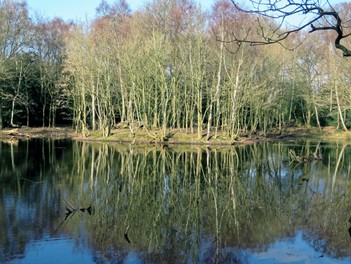 This vast forest, almost ten kilometers long, is the favorite destination of many people who go there to run, cycle, play cricket or simply relax in the shade of its huge beeches and oaks. There are two prehistoric fortified hills, almost buried by vegetation. Not far from the roundabout, in a northwest direction, there is a stone block on which the relief of a gypsy caravan is depicted. The monument memorializes the birth of Rodney Smith, born in 1860 in a parked wagon right in this spot. The man had converted to Christianity at a young age and later became a preacher for the Salvation Army.
This vast forest, almost ten kilometers long, is the favorite destination of many people who go there to run, cycle, play cricket or simply relax in the shade of its huge beeches and oaks. There are two prehistoric fortified hills, almost buried by vegetation. Not far from the roundabout, in a northwest direction, there is a stone block on which the relief of a gypsy caravan is depicted. The monument memorializes the birth of Rodney Smith, born in 1860 in a parked wagon right in this spot. The man had converted to Christianity at a young age and later became a preacher for the Salvation Army.Queen Elizabeth's Lodge - The Tudor style hunting cabin on Rangers Road is named after Queen Elizabeth, but was actually built by her father Henry VIII in 1543. It was built as rather a tall building so that from the windows of the top floor, the movement of animals could be observed and the hunting organized. Today, it is reached by a wide spiral staircase. You can admire the original ridge beams, the main beams, the posts, and all the complex carpentry work. The small museum includes various objects related to the natural history of the area. William Morris had known it since his childhood and wrote that the cabin inspired such a sense of adventure in him that he had the impression of living inside a novel. Near it, on the same road, stands Butler's Retreat, a wooden building that in 1891 was transformed into a café. Alternatively, on Forest Side, there is the beautiful Queen Elizabeth pub.
On the northern wall of All Saints’ church there is a small porch, less than 1.5 meters tall, which probably dates back to the 12th century. Either the parishioners were very short in stature or they had to bend down to pass through it.
At the intersection of Old Church Lane with Hall Lane, on Chingford Mount, there stands a large white obelisk in the center of a pentagonal brick wall. From the inner corners of the wall, jets of water flow towards the obelisk.
Along the same road, on the wide green horizontal bars of the entrance gate of Mansfield Park, near the small roundabout, we can observe the white profile of a deer jumping. This does not mean that there are deer in the park; however, you can enjoy a beautiful view of the water basins of the Lea River valley. In some parts of the valley, the meadows are oriented along parallel lines; perhaps this arrangement comes from the terrace cultivations which started in the Middle Ages.
